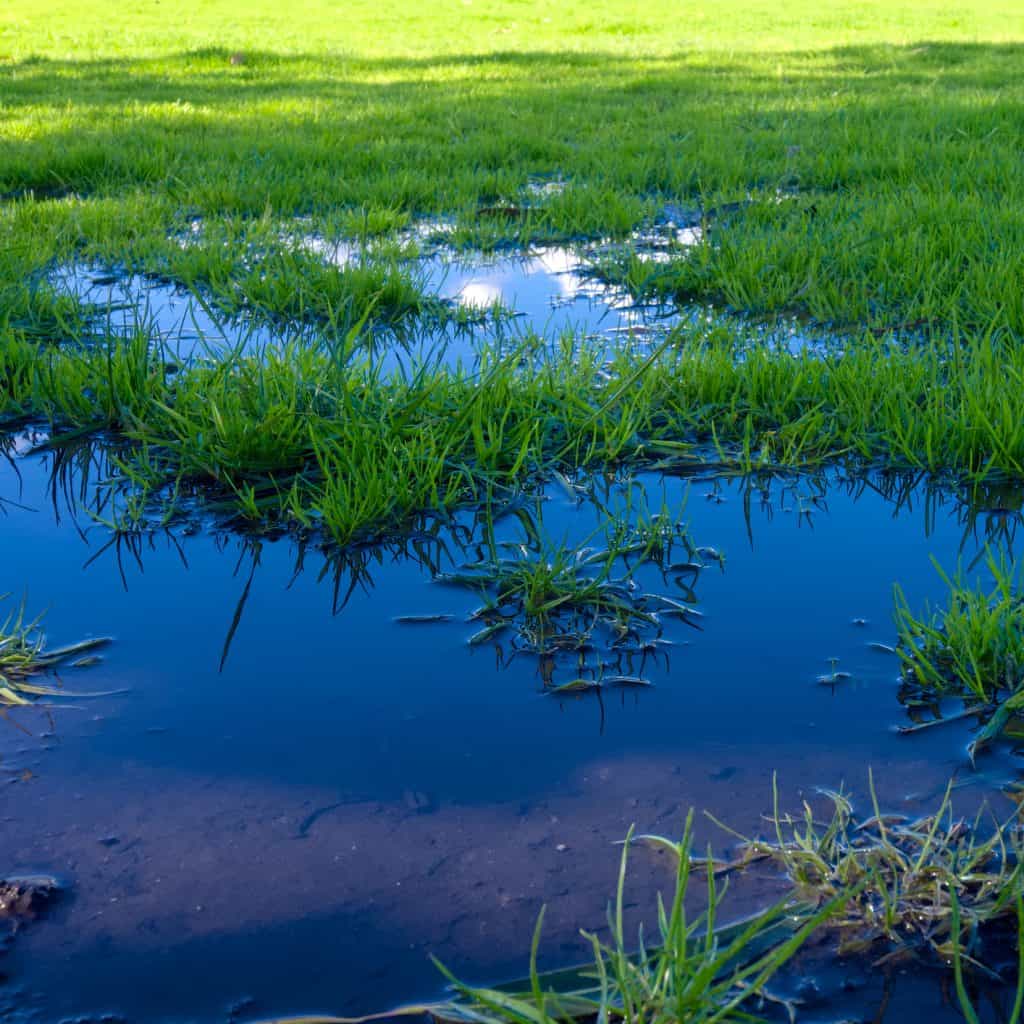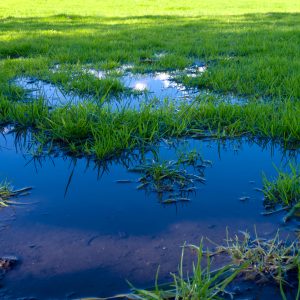Whether you take great pride in your lawn or simply don’t want it to look like a disaster, spring or summer flooding can be one of the most frustrating – and even dangerous – situations to deal with.
Constant rain and flooding can leave your lawn anywhere between a mucky mess and an all-out lake.
Depending on the degree of the situation, there are certainly some things you can do to help your lawn out through this wet situation and addressing this issue now can help you a lot in the future.
Drainage
When you buy a new property, it’s certainly possible you may find out early that flooding is an issue. Often, however, this issue surfaces later on.
Either way, it’s probably going to fall on you to fix the issue if it’s going to be a major problem. First, you can check with your city council to discover how to fix any flooding issues. Then, you should try to find out where the water is flowing from that is flooding your yard. It could be from a slope in your yard or a neighbor’s or even from excess roof water.
Once you’ve found some of these answers you can consider how to fix the problem, either on your own or with a professional if you don’t have experience in this area. There are a few ways you can use to fix the drainage issue.
- French Drains can be put into different spots in the yard. These are trenches that take excess water to other places in the yard. This is a good option for yards with one or two really bad spots.
- Sump Pumps are expensive but effective. The pumps are put into a well, suck out the water and pump it to another spot.
- Dry Wells are used for yards with really bad problems. Essentially, these wells collect the extra water during a flood and allow the water to flow into the water slowly.
- Elevating the yard helps to keep water from pooling in your one trouble area simply by using mulch and topsoil.
Other issues
What if drainage isn’t necessarily the problem? Maybe it’s just raining so much and so consistently your lawn just can’t absorb the amount of water coming down. Because of that, you have to watch out the window as your lawn becomes a gross, wet pit.
So what do you do?
- Hang in there and be patient. You really can’t do much till the ground has begun to dry. If your feet are sinking into the soil, stay off it. Marching around a soggy lawn can do damage to the soil and root structure.
- Aerating the soil once it’s dried out is a good idea to help with future drainage because the soil may have become compacted during the flood. The aerating will help water get deeper into the soil, away from the surface while helping roots get sufficient nutrients.
- Replacing the topsoil that was eroded is a good idea because the root structure of your lawn may have been damaged. Use compost or manure along with the topsoil.
- Grow back your lawn, even if it’s a temporary cover so the soil isn’t further eroded from any lawn areas that were destroyed. Use a fast-growing cover like ryegrass and re-seed the areas that need it.
Flooded lawns need attention or else they can endure serious soil problems. Plus, fixing the problems you notice as soon as you can will help you the next time the heavy rains hit your area.
And whatever lawn and garden equipment you might need, even if it’s a rental, Snappy’s Outdoor Equipment either has it or can repair it. Call us at 419-879-1196 or stop by our store today. And if you haven’t heard of our MVP program (LINK) check it out now and start reaping the rewards.




